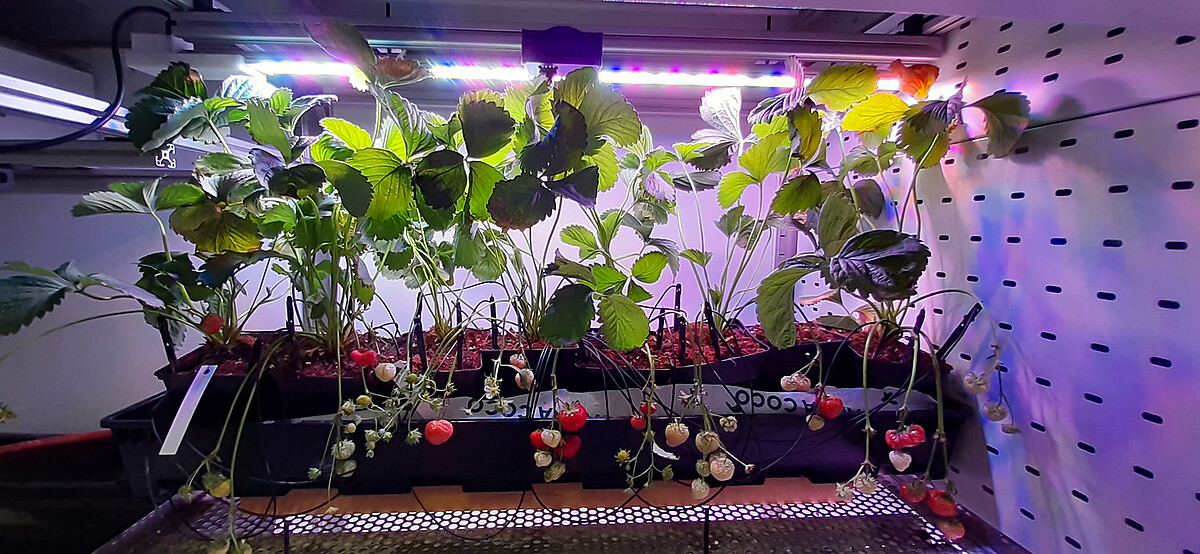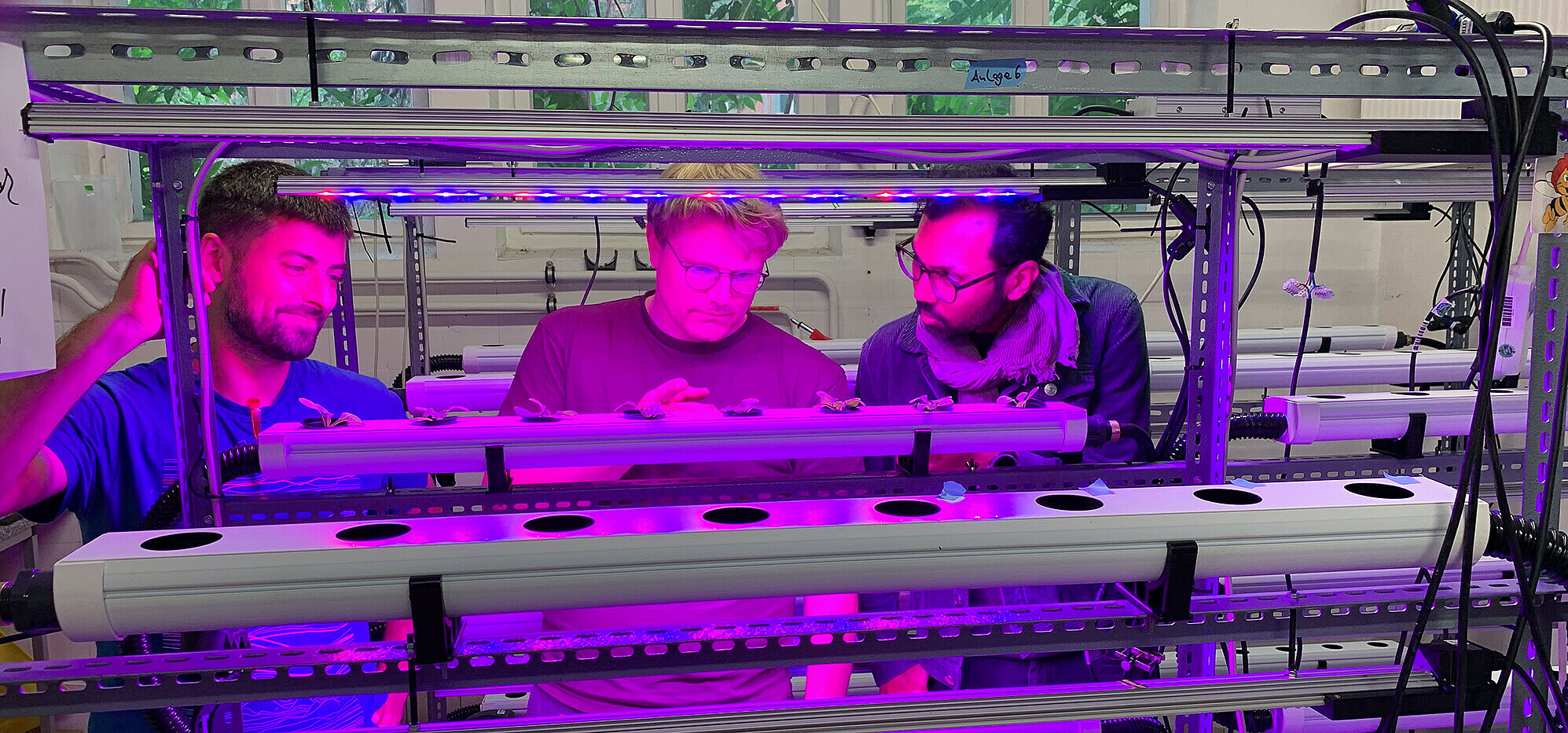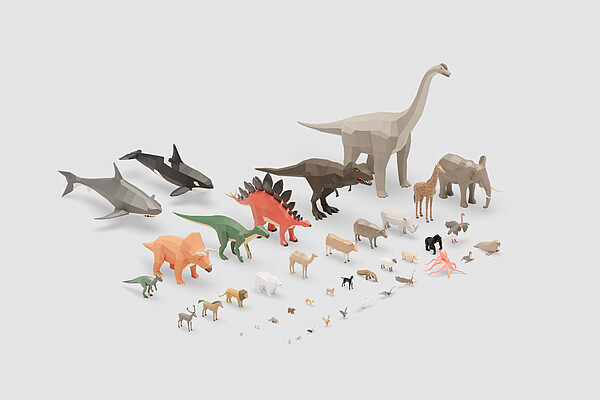Let There Be Light!
Berlin startup Crocus Labs is revolutionizing agriculture with new LED technology for indoor and vertical farming.
Whether you grow lettuce, peppers or cannabis, you need light. Dependency on sunlight and the seasons has been one of the main constraints of agriculture and horticulture for thousands of years. But one Berlin startup aims to change that.
Today we are interviewing Dr. Prashanth Makaram, founder of Crocus Labs, who with the support of HTGF, seed investor for innovative technologies and business, aim to revolutionize farming.
So Prash, congratulations on your successful financing round. What does Crocus Labs do?
We bring sunlight into indoor spaces in order to enable the farming of a wide variety of crops while utilizing as little resources as possible.
Did you discover an interest in gardening as a child, or why are you intent on changing how we grow stuff?
No, it was more that as an adult I became interested in the impact of agriculture on biodiversity. On trips to Costa Rica and to Madagascar I noticed the beauty and fragility of undisturbed nature. I started to look for ways to protect what is left of it. So much of today’s form of agriculture has a harmful impact on rainforests through deforestation and consequent biodiversity losses. So I wanted to do something in that area, and since I come from a technology background I wanted to do something with a technical angle to it.
So the question I was asking myself was, how can we change today’s agriculture practices? At that time I began to look at indoor farming, which as a market was starting to catch up. And I saw that maybe this could be a solution, if we can make it widely adoptable. So with Crocus Labs we basically try to enable vertical farms so that they can provide an alternative to today’s farms and in that way we can stop biodiversity losses. That is my main drive behind it all.
What are “vertical farms”?
Well, in a generic way you can say indoor farms can be either greenhouses or vertical farms. Vertical farms are what we call “controlled environment agriculture”. So you basically grow everything in a very controlled manner inside a building. The crops are stacked on top of each other. This means that the resources you are using, from land, water, to pesticides etc., are much lower. So you can grow a lot more in a smaller area and produce food where most people live, inside cities, to keep transportation short.
And your solution to make these vertical farms more efficient has to do with light. So how is your artificial light better than sunlight?
Well actually, we try to remake the sunlight indoors. So the problem with sunlight is on the one hand that we don’t get enough of it in big parts of Europe. In the Netherlands growers already use artificial lights in greenhouses. Vertical farms rely even heavier on artificial lights, because the plants are stacked. In vertical farms you cannot bring the light uniformly to all the plants all the way down the stack. If you have five or ten storeys of plants that you’re growing, sunlight usually hits only the top two and by the time you get to the bottom you don’t have any light. Actually most vertical farms do not even have glass ceilings.
So basically our idea is to recreate the sunlight using proprietary lighting technologies so that you get the same amount of light across all the plants but without creating a huge burden on electricity consumption.
One of the biggest problems at the moment for vertical farms is that although the idea is nice, they may grow a handful of crops but they also have a huge carbon footprint, because of how much electricity is being consumed. We want to reduce this footprint so that vertical farms can become more meaningful and competitive with other agriculture.
Taste is also a big challenge because the lighting solutions currently available are too far away from the sun’s spectrum.
How far are you on the way to achieving all that?
We had a pre-seed round last year and now we just closed a big round with the High-tech Gründerfonds. We have two major customers who are ready to pilot with us. One of them is a big strawberry producer in northern Germany, the other is a big Berlin company. So this year we will grow the team, and yeah, we’re actively recruiting at the moment!

Now, you’re already claiming that your solution will be a lot more cost-effective than the competition. How so?
We talk about costs in terms of the whole thing, capital expenses plus operational expenses. So if for the same price we can give you lights that are much more efficient than the competition’s, then over the course of four or five years your total expenses are a lot less. So you get a lot more light output on the amount of Euros you spend, which means that your production costs are much lower. This is particularly interesting as you start growing higher value crops like berries.
So what is the core difference in the technology?
The core difference in technology is that we are the only company at the moment building lights from the ground up for this specific use case. We build our own LE diodes and our smart lighting systems make use of not only our proprietary LED technologies, but also sensor systems and advanced algorithms. And this goes back to our semiconductor know-how. We have been able to get a lot of light output with very little current.
This is one part of it. The second part is that we have been able to recreate the effects of real sunlight, which is crucial for taste. So these are the major advantages that we bring.
So there are surely more use cases for this new technology, right?
Yeah, there are. I think one of the biggest topics coming up is what is called “human-centric lighting”. In houses and office spaces they want to bring light that acts more like sunlight. If you look at many of today’s lights they mostly have a big blue peak, which means that is not very good for your sleep. So if you have white light on at night and then you try to go to sleep it affects your circadian rhythms. So human-centric lighting and lighting that matches the circadian rhythm is about getting people to sleep better and have better work schedules.
Your experience is in semiconductors. How much new stuff did you have to learn in the last couple of years?
A lot! Because this is the first time I am carrying my technical knowledge to farming. I don’t have anybody in the family with a farming background. So I had to learn a lot about indoor farming.
And lighting is not a space I was in before. I was in a lot of consumer sensors and medical devices, so lighting and how indoor lighting affects plants is something I had to learn over time. And also the whole complexity of light in the context of greenhouses and vertical farms. Not to mention how the lighting industry works.
Why did you choose Berlin as a base for Crocus Labs?
Berlin is my favorite European city. I did my PhD in the United States in Boston. I first came to Europe in Spain for my first startup, through which I had my initial introduction to Berlin because it was incorporated with Bayer pharmaceuticals. So I was here working with Bayer. And then I just fell in love with Berlin. It’s very cosmopolitan, it has a lot of energy, in terms of people it is a very human-centric city. It has this drive, creative as well as entrepreneurial.
My wife and I spent two years in Munich, but we very much prefer Berlin and desperately wanted to come back here. The one part is the human aspect, the second part is that there are very nice networks in Berlin, the universities and also the entrepreneurial startup networks. Berlin is a very welcoming city.
Where did the name Crocus Labs come from?
Back then we wanted to grow saffron, because saffron is a high-value crop, and crocus is basically the flower that gives you saffron. So that’s how we started Crocus Labs. We don’t do anything in saffron at the moment, so maybe we’ll re-brand at some point. Or we’ll keep it. It’s a nice name!
So this is, what, your third startup now?
Yeah.
So third time lucky?
I hope so!
2022 is going to be an exciting year for you. We wish you the best of luck!
Berlin, as one of Europe’s most exciting metropoli, may seem far removed from the countryside but could well be where the next revolution in farming technology originates.
Interview: Olaf Bryan Wielk, ideenmanufaktur
Header image: © Crocus Labs





